The Sagrada Familia, an iconic basilica located in the heart of Barcelona, has captivated visitors for over a century with its intricate design and ambitious scale. This architectural masterpiece, designed by the renowned Antoni Gaudí, reflects a unique blend of Gothic and Art Nouveau styles that continues to inspire awe and admiration.
In exploring The Fascinating History of Sagrada Familia: Barcelona's Architectural Icon, we uncover the stories behind its construction, the challenges faced, and the enduring legacy of Gaudí’s vision. As work progresses towards its completion, the Sagrada Familia remains a symbol of creativity and devotion, embodying the spirit of the city itself.
The Visionary Architect Behind Sagrada Familia: Antoni Gaudí's Genius
Antoni Gaudí, the visionary architect behind the Sagrada Familia, was a true innovator whose genius redefined architectural norms. Born in 1852, Gaudí's unique approach combined nature with architecture, allowing him to create structures that harmonized with their surroundings. His ability to draw inspiration from organic forms led to the incorporation of complex geometries and vibrant colors, making his work stand out in the architectural world.
Gaudí's design philosophy was deeply influenced by his religious devotion and his love for Catalonia. He believed that architecture should not merely be functional but should also convey a sense of spirituality. This belief is epitomized in the Sagrada Familia, where he infused the basilica with symbolism and meaning. Some key aspects of his vision include:
- Incorporation of natural light through intricate stained glass.
- Use of columns designed to resemble trees, supporting a forest-like canopy.
- Integration of religious narratives throughout the façade and interior.
Gaudí's innovative techniques also included the use of catenary arches and hyperboloid structures, which allowed for greater stability and aesthetic appeal. His commitment to craftsmanship is evident in the painstaking detail present in every element of the Sagrada Familia. These groundbreaking methods not only advanced architectural practices but also set a benchmark for future generations of architects.
As the basilica continues to rise toward completion, the influence of Gaudí’s genius is undeniable. His work has earned the Sagrada Familia recognition as a UNESCO World Heritage Site, and his legacy lives on through the ongoing dedication to finishing this monumental project. Gaudí’s vision remains a testament to the power of creativity and the enduring impact of innovative design.
Exploring the Symbolism in Sagrada Familia's Unique Design Elements
The Sagrada Familia's design is rich in symbolism, reflecting Gaudí's deep religious beliefs and his admiration for nature. The basilica is structured to narrate biblical stories, with each façade dedicated to different events in the life of Christ. This intentional design allows visitors to engage with its spiritual message, transforming the act of exploration into a profound experience.
One of the most striking elements of the Sagrada Familia is its towering spires, each representing a different evangelist. The heights of these towers symbolize the aspiration towards the divine, while the intricate details pay homage to the flora and fauna of Catalonia. The culmination of these elements creates a verticality that draws the eyes upward, reflecting the connection between the earthly and the heavenly.
Additionally, the play of light within the basilica serves a dual purpose: it enhances the aesthetic beauty and reinforces the spiritual ambiance. The stained glass windows are meticulously designed to allow colored light to pour in, illuminating the interior with hues that change throughout the day. This dynamic interplay of light and color symbolizes the presence of the divine, inviting contemplation and meditation.
Another significant aspect of Gaudí's design is his innovative use of natural forms. The columns within the nave mimic trees, branching out to create a ceiling reminiscent of a forest canopy. This design choice not only provides structural support but also conveys the interconnectedness of nature and spirituality, emphasizing Gaudí's belief that architecture should echo the beauty of the world around us.
The Construction Journey of Sagrada Familia: A Century-Long Masterpiece
The construction journey of the Sagrada Familia began in 1882, and it has turned into a remarkable saga spanning over a century. Initially designed by Francisco de Paula del Villar, the project took a transformative turn when Antoni Gaudí took over in 1883. His vision not only expanded the original plans but also infused the project with his unique architectural style, setting it apart from any other basilica in the world.
The dedication to Gaudí's vision has been unwavering, even as construction faced numerous challenges. Over the decades, the project has encountered interruptions due to political turmoil and the Spanish Civil War, which severely hampered progress. However, the resilience of craftsmen and architects dedicated to completing Gaudí’s dream has ensured its continuity. Key milestones in the construction include:
- Completion of the Nativity façade in 1935.
- Significant advancements in technology allowing for modern building techniques.
- Ongoing work on the Glory façade, expected to be finished by 2026, coinciding with the centenary of Gaudí's death.
Throughout its long construction journey, the Sagrada Familia has captivated artists and architects alike, serving as an ongoing source of inspiration. The innovative use of geometry and organic forms has not only defined Gaudí's legacy but has also influenced contemporary architecture worldwide. Today, the basilica remains a living testament to the collaborative efforts of countless artisans who strive to bring Gaudí’s vision to fruition.
With an estimated completion date in the near future, the Sagrada Familia symbolizes not just a physical structure, but a century-long commitment to creativity and faith. As it nears completion, it stands as a beacon of artistic expression and dedication, embodying the spirit of Barcelona and the enduring power of Gaudí's genius.
Cultural Significance of Sagrada Familia: A Landmark of Barcelona
The Sagrada Familia holds immense cultural significance as a landmark of Barcelona, embodying the city's rich history and artistic heritage. This architectural marvel is not just a religious site; it is a symbol of Catalonia's identity and a representation of the community's dedication to beauty and craftsmanship. Over the years, the basilica has become a global icon, attracting millions of visitors and serving as a focal point for cultural events and celebrations.
One of the key aspects of its cultural significance is its role in promoting local pride. The Sagrada Familia is often seen as a reflection of the spirit of Barcelona, showcasing the innovative genius of its architect, Antoni Gaudí. This masterpiece not only highlights the city's architectural diversity but also resonates with the collective aspirations of its people. In doing so, it fosters a sense of belonging and unity among residents and visitors alike.
Additionally, the Sagrada Familia plays a vital role in the artistic landscape of Barcelona. It serves as an inspiration for contemporary artists and architects, influencing a new generation of creators. The fusion of Gothic and Art Nouveau styles in Gaudí's design invites continuous exploration and reinterpretation within the art community, ensuring that its impact extends far beyond its physical structure. Key influences include:
- Encouraging artistic expression through public installations and exhibitions.
- Serving as a case study in architectural schools worldwide.
- Promoting tourism that supports local economy and cultural exchange.
In conclusion, the Sagrada Familia is more than just an architectural icon; it represents the heart and soul of Barcelona. Its ongoing construction is a testament to the city's unwavering commitment to artistry and cultural heritage, ensuring that this landmark will continue to inspire future generations. As the basilica nears completion, it stands as a powerful reminder of the importance of creativity, faith, and community in shaping our cultural landscape.
Visiting Sagrada Familia: Tips for Exploring This Architectural Wonder
When visiting the Sagrada Familia, it's essential to plan your trip wisely to fully appreciate this architectural wonder. Consider purchasing your tickets online in advance to avoid long queues and ensure a smoother entry. Visiting during off-peak hours, such as early in the morning or late in the afternoon, can provide a more tranquil experience, allowing you to absorb the intricate details without the crowds.
While exploring the basilica, make sure to take advantage of the guided tours available. These tours often include fascinating insights into Gaudí's vision and the symbolism embedded in the architecture. Alternatively, you can opt for an audio guide, which allows for a more flexible exploration of the Sagrada Familia. Don't forget to look up and admire the stunning stained glass windows that illuminate the interior with vibrant colors, showcasing the masterful craftsmanship.
As you wander through the various sections of the Sagrada Familia, take a moment to reflect on the construction progress and the ongoing dedication to Gaudí's original designs. Making a visit to the towers is highly recommended; the panoramic views of Barcelona from above are breathtaking and provide a unique perspective on how the basilica interacts with the cityscape. Remember to wear comfortable shoes, as some areas require a bit of walking and climbing.
Lastly, to enhance your visit, consider exploring the surrounding area. The Gardens of the Sagrada Familia offer a serene space to relax and enjoy the view of the basilica from a distance. Nearby, you can find numerous cafes and shops where you can sample local Catalan cuisine and purchase souvenirs, making your trip to this iconic landmark a well-rounded experience.
The Impact of Sagrada Familia on Modern Architecture and Tourism
The impact of the Sagrada Familia on modern architecture is profound, as it has inspired numerous architects and designers across the globe. This iconic basilica showcases Gaudí's innovative techniques and unique aesthetic, encouraging contemporary architects to explore the integration of organic forms and sustainable practices in their own designs. Some of its key influences include:
- Promotion of the use of natural light and organic materials.
- Pioneering the combination of structural and aesthetic elements.
- Encouraging a deeper connection between architecture and nature.
Moreover, the Sagrada Familia has become a major tourist attraction, drawing millions of visitors each year. Its enchanting beauty and intricate details lead to a unique experience that captivates people from all walks of life. The influx of tourists not only boosts the local economy but also fosters cultural exchange, as visitors engage with the rich heritage of Barcelona.
The basilica's significance extends to its role in promoting architectural education. Many universities include the Sagrada Familia in their curricula, allowing students to study Gaudí's techniques and the building's ongoing construction. This engagement with future architects ensures that the principles of innovation and creativity inherent in the Sagrada Familia continue to thrive.
In summary, the Sagrada Familia stands as a testament to the fusion of art, architecture, and spirituality. Its influence on modern architecture and tourism underscores the importance of preserving cultural landmarks while fostering inspiration for future generations. As the construction of this masterpiece progresses, it continues to inspire awe and admiration worldwide.
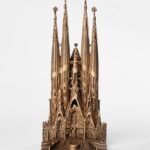 Sagrada Familia Barcelona Store: Un paraíso de recuerdos y souvenirs
Sagrada Familia Barcelona Store: Un paraíso de recuerdos y souvenirs Sagrada Familia Barca Store: A Must-Visit for FC Barcelona Fans
Sagrada Familia Barca Store: A Must-Visit for FC Barcelona Fans Sagrada Familia Barcelona: Mass Times and Spiritual Experience
Sagrada Familia Barcelona: Mass Times and Spiritual ExperienceIf you want to know other articles similar to The Fascinating History of Sagrada Familia: Barcelona's Architectural Icon you can visit the category Blog.
Leave a Reply

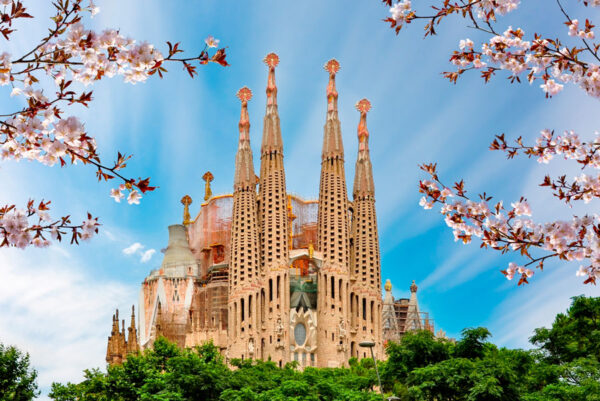
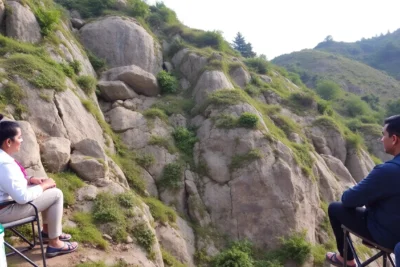
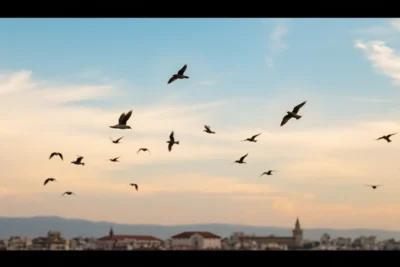





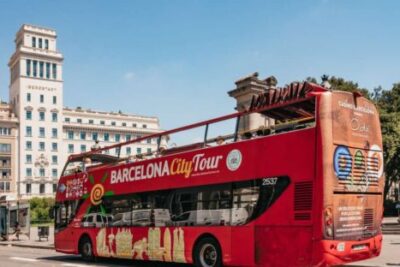
Read more!